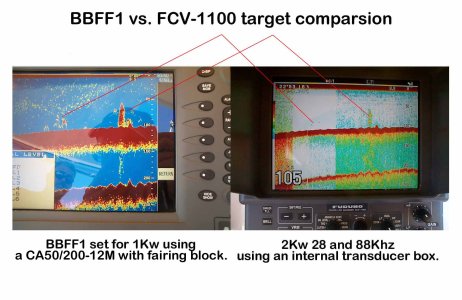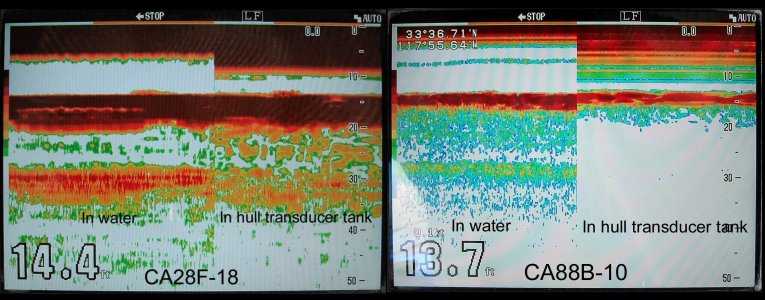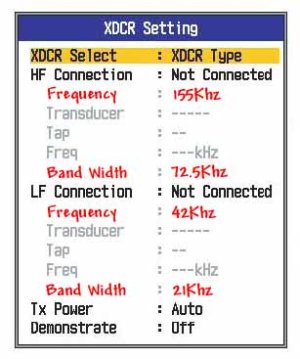Hello,
Firstly let me say I really love your product - I recently installed the above set up on a new fibreglass PowerCat and have never seen the level of detail I am currently experiencing before.
I have this unit set up side by side with one of the latest, state of the art Chirp systems and the FCV-1150 & R299 perform much better IMO!!
However, can you please help me with the following:-
- what are the best settings for achieving best bottom reads AT SPEED (25~30 kts)?
Am I correct in assuming that gaps in the read are caused by air under the sponsons (hull)?
Thanks.
Firstly let me say I really love your product - I recently installed the above set up on a new fibreglass PowerCat and have never seen the level of detail I am currently experiencing before.
I have this unit set up side by side with one of the latest, state of the art Chirp systems and the FCV-1150 & R299 perform much better IMO!!
However, can you please help me with the following:-
- what are the best settings for achieving best bottom reads AT SPEED (25~30 kts)?
Am I correct in assuming that gaps in the read are caused by air under the sponsons (hull)?
Thanks.






